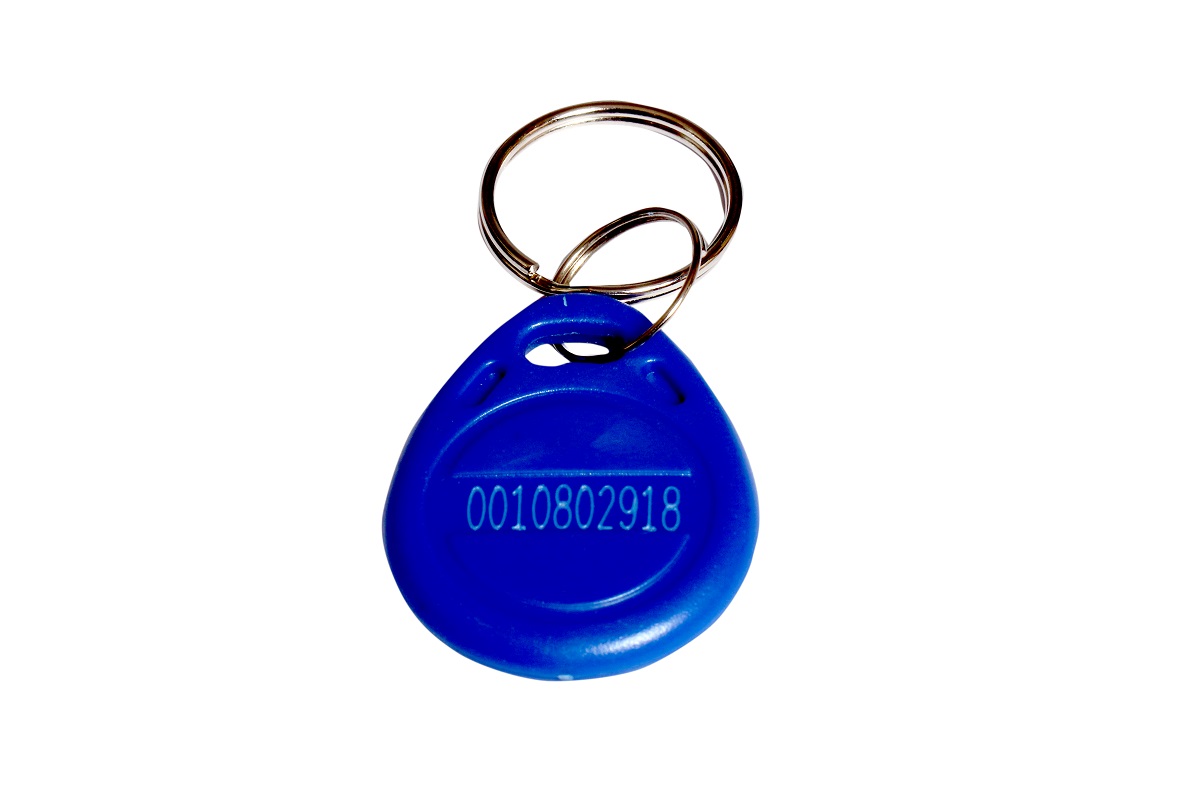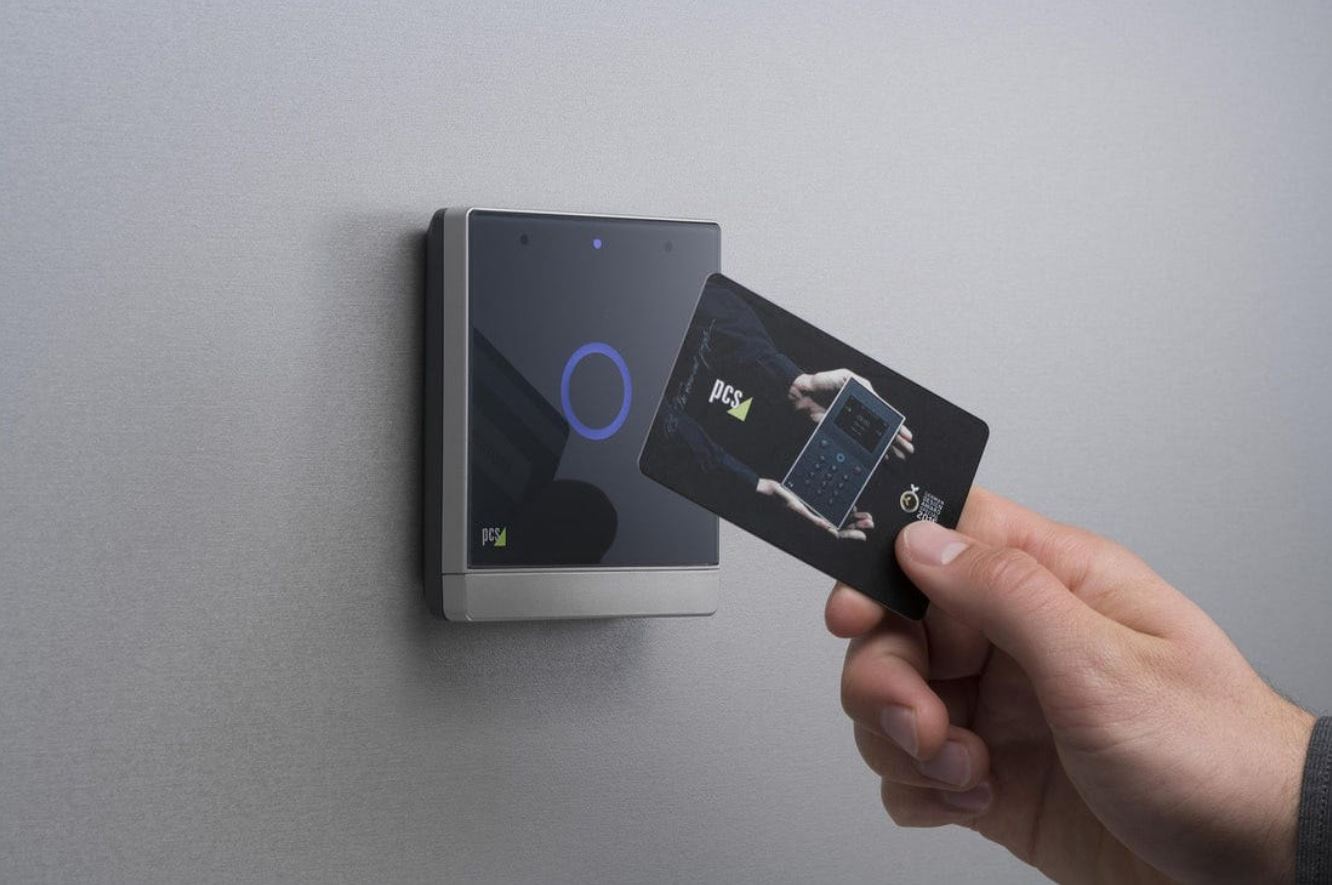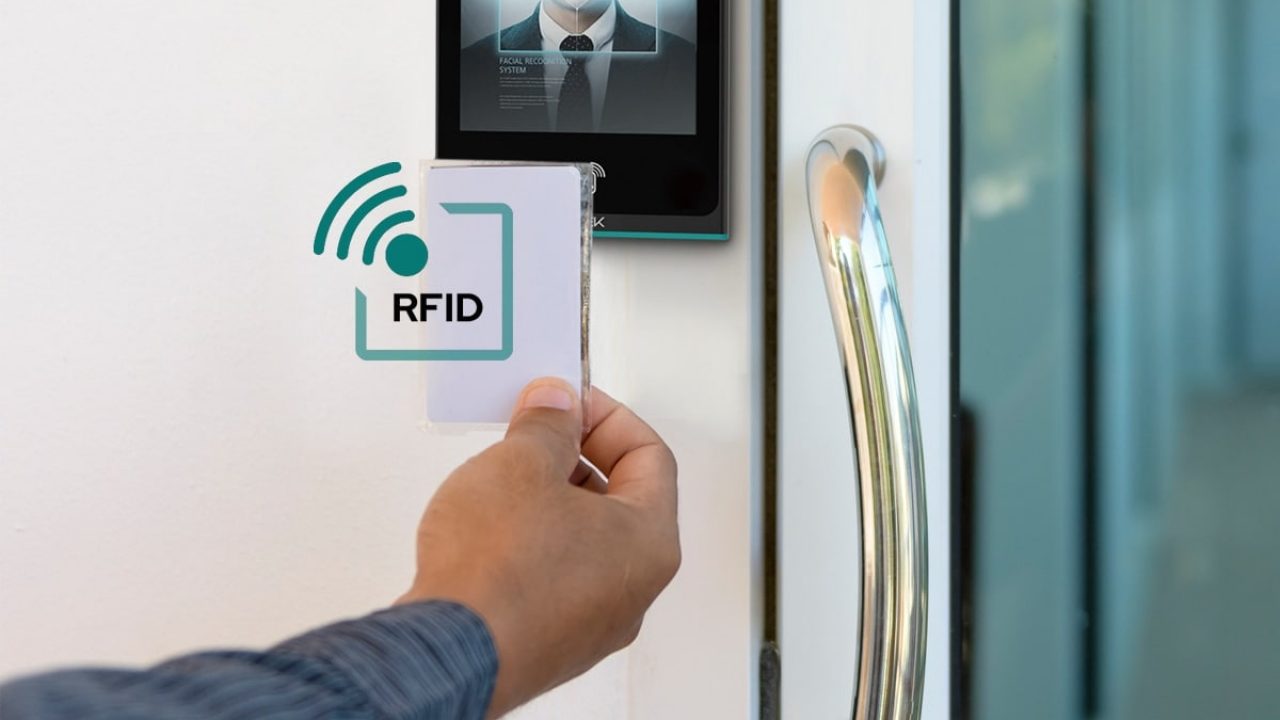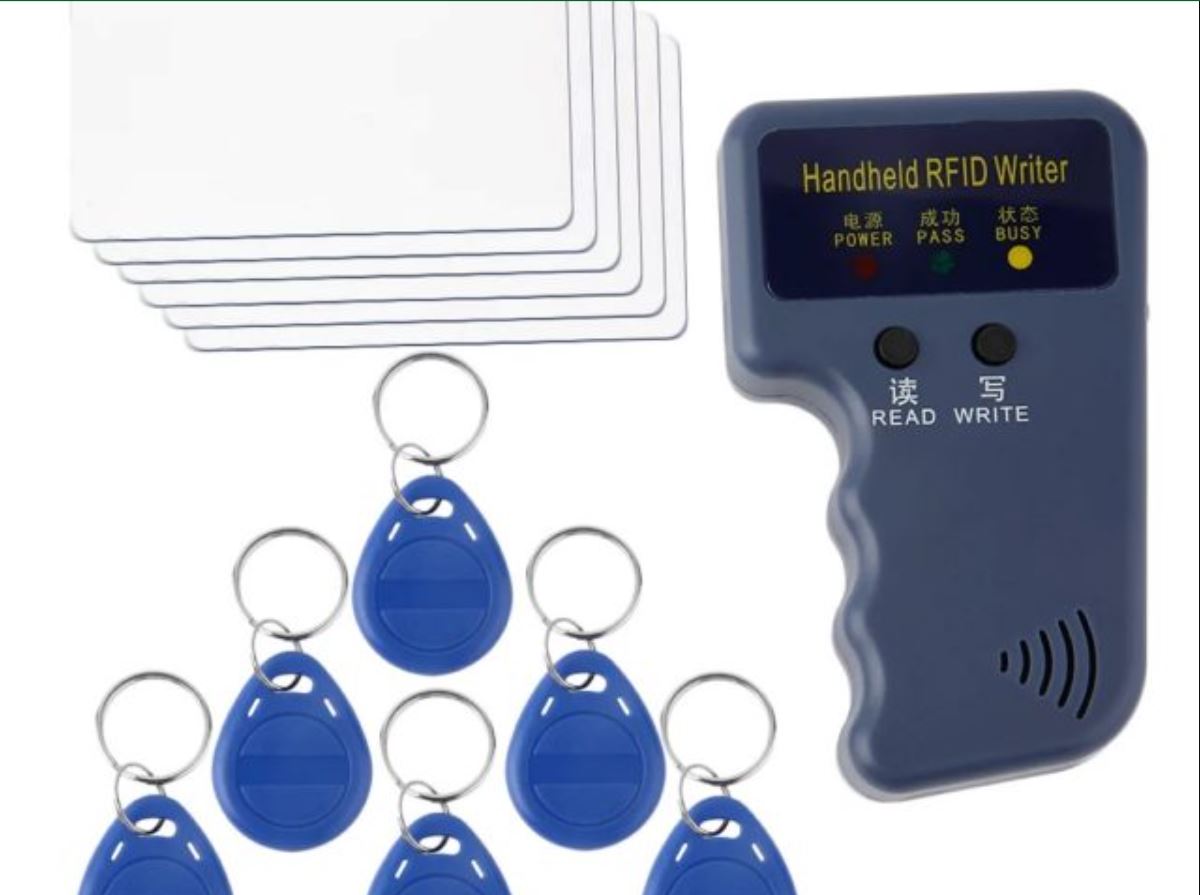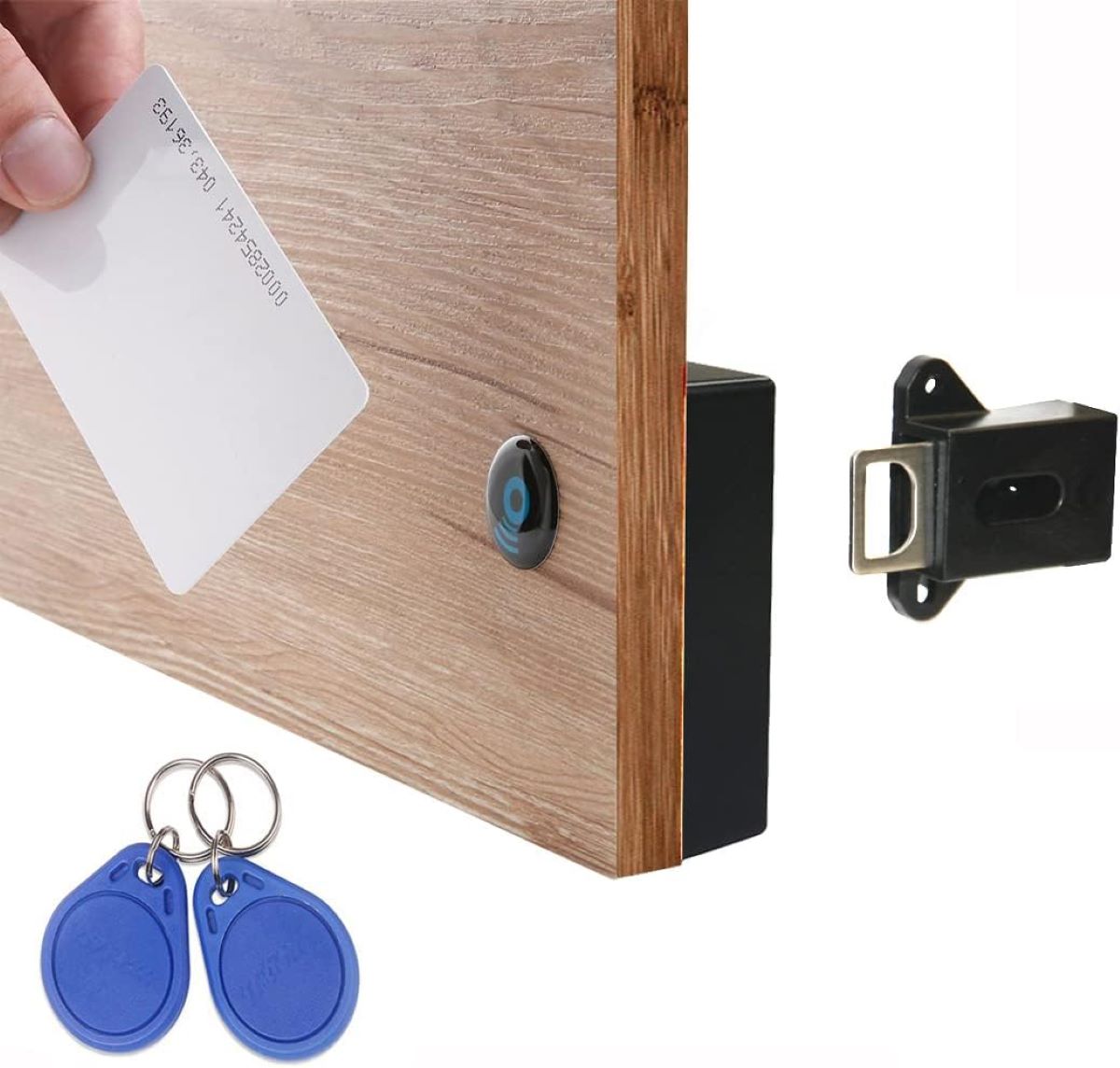Introduction
Welcome to the world of RFID key fobs! In this digital age, where technology continues to advance at an exponential rate, it’s no surprise that we’re constantly introduced to new and innovative ways to make our lives easier. One such technology that has gained significant popularity is Radio Frequency Identification (RFID).
RFID technology has revolutionized many industries, including access control systems and asset tracking. RFID key fobs, in particular, have become a convenient and secure alternative to traditional keys. They offer a plethora of benefits, such as quick and effortless entry, enhanced security, and the ability to store and transmit data wirelessly.
In this article, we’ll take an in-depth look at how RFID key fobs work. We’ll explore the underlying technology, the components that make up an RFID key fob, and the mechanisms that enable them to function seamlessly. Additionally, we’ll delve into the encryption and security measures employed by these key fobs to protect sensitive information.
Furthermore, we’ll examine the different types of RFID key fobs available in the market and their varied applications. From access control systems in buildings and vehicles to contactless payment solutions, RFID key fobs have found their way into many aspects of our daily lives, making them incredibly versatile.
But before we delve into the intricacies of RFID key fobs, let’s first gain a comprehensive understanding of RFID technology itself.
What is RFID Technology?
Radio Frequency Identification (RFID) technology is a wireless communication system that uses radio waves to identify and track tags attached to objects. It consists of three main components: the RFID tag, the reader, and the computer system.
The RFID tag is a small electronic device that contains a microchip and an antenna. It can be attached to or embedded within various objects, such as key fobs, cards, or even products in a retail store. Each tag has a unique identification number that is used to distinguish it from other tags.
When the RFID tag is within range of an RFID reader, which emits radio waves, the tag’s antenna picks up the signal and powers the microchip. The microchip then transmits the stored information back to the reader through radio waves, allowing the reader to identify and collect data from the tag.
The reader, also known as an interrogator, is the device that emits and receives radio waves. It is responsible for communicating with the RFID tag and collecting the data transmitted by the tag. The reader can be handheld or fixed in a specific location, depending on the application.
Once the reader has collected the data from the RFID tag, it sends the information to a computer system for processing and storage. The computer system analyzes the data and performs various actions or provides relevant information based on the collected information.
RFID technology offers several advantages over traditional barcode systems. Firstly, RFID tags can be read and scanned at a distance, allowing for quick and efficient identification without the need for line-of-sight. This feature makes RFID ideal for applications such as inventory management and access control.
Additionally, RFID tags can store and transmit larger amounts of data compared to barcodes. This enables more detailed information to be associated with an object or tag, providing valuable insights and improving efficiency in various industries.
The versatility and functionality of RFID technology have led to its widespread adoption in various fields. From inventory management in retail and healthcare to asset tracking in logistics and supply chain management, RFID technology continues to revolutionize how we interact and engage with the world around us.
Components of RFID Key Fobs
RFID key fobs consist of several key components that work together to provide secure and convenient access control. Understanding these components is essential in comprehending how RFID key fobs operate.
1. RFID Tag: The RFID tag is the core element of an RFID key fob. It contains a microchip and an antenna for communication with RFID readers. The tag is usually encapsulated within a sturdy casing to protect it from damage and ensure durability.
2. Microchip: The microchip embedded in the RFID tag stores and processes information. It holds the unique identification number of the key fob and other data that may be necessary for specific applications. The microchip has a limited storage capacity, but it is sufficient for storing essential details.
3. Antenna: The antenna is responsible for transmitting and receiving radio waves between the RFID tag and the reader. It captures and amplifies the radio signals emitted by the reader, allowing the tag to send its identification and other relevant data back to the reader.
4. Battery (optional): Some RFID key fobs are battery-powered to enhance their functionality. The battery provides additional power to the microchip, allowing for more advanced features, such as encryption and authentication. Battery-powered key fobs are commonly used in high-security applications.
5. Encasing: The RFID tag, microchip, and antenna are typically enclosed within a protective casing made of plastic, rubber, or other durable materials. The encasing not only safeguards the internal components from physical damage but also allows for easy attachment to key rings or lanyards.
6. Keychain or Attachment: The keychain or attachment is the physical component that allows the RFID key fob to be easily carried and used. It may be a simple metal ring or a plastic attachment designed specifically to hold the key fob securely.
Combined together, these components enable RFID key fobs to function as secure and convenient access control devices. The RFID tag stores the unique identification number, which is transmitted to the reader via the antenna. The reader then processes the data and grants or denies access based on the information received.
It’s important to note that the specific components and their functionalities may vary depending on the type of RFID key fob and the intended application. Some key fobs may have additional features, such as buttons for specific functions or built-in sensors for additional security measures.
In the next section, we will dive deeper into the workings of RFID key fobs and explore how they interact with RFID readers for access control purposes.
How Does an RFID Key Fob Work?
An RFID key fob works through a simple yet sophisticated process of communication between the key fob and an RFID reader. Let’s take a closer look at the steps involved:
1. Initialization: When an RFID key fob comes within range of an RFID reader, the reader emits a radio frequency signal that activates the key fob’s microchip. The microchip powers up and prepares for communication with the reader.
2. Authentication: The RFID reader sends a unique signal or series of commands to the key fob for authentication or identification purposes. This signal serves as a challenge to ensure the key fob is genuine and authorized for access.
3. Response: In response to the reader’s signal, the key fob’s microchip generates a specific response or identification code. This code contains the unique identifier of the key fob and any additional data stored on the chip, such as access permissions or user credentials.
4. Transmission: The generated response code is transmitted back to the RFID reader through the key fob’s antenna. The reader captures and decodes the response, extracting the relevant information from the key fob’s microchip.
5. Processing: The RFID reader processes the received data, comparing it with the authorized access list or database. It determines whether the key fob’s identification code matches any authorized entries and evaluates the access permissions associated with the key fob.
6. Access Decision: Based on the processing outcome, the reader makes a decision regarding access rights. If the key fob is authenticated and authorized, the reader grants access by activating a door lock, gate, or other access mechanisms. If the key fob is not authorized, access is denied.
This entire process happens seamlessly and in a matter of seconds. The robust and efficient communication between the RFID key fob and the reader allows for quick and convenient access control in various environments, such as buildings, parking lots, or gated communities.
It’s important to note that the exact details of how an RFID key fob works can vary depending on the specific technology and protocols used. Some key fobs may utilize encryption methods to enhance security, while others may have additional features like biometric authentication.
In the next section, we will explore the reading mechanism and discuss how RFID readers interact with RFID key fobs to enable access control.
Reading Mechanism
The reading mechanism of an RFID system plays a crucial role in the communication between RFID key fobs and RFID readers. It involves the transmission and reception of radio waves. Let’s delve into the reading mechanism of RFID technology:
1. RFID Reader: The RFID reader is the device that initiates the communication process by emitting radio waves. It consists of an antenna, a transceiver, and a control unit. The antenna emits radio frequency signals and receives the response from the RFID key fob.
2. Frequency: RFID systems operate in various frequency ranges, including Low Frequency (LF), High Frequency (HF), and Ultra-High Frequency (UHF). The frequency used depends on the specific application and requirements, such as reading range and data transfer speed.
3. Antenna: The reader’s antenna is responsible for transmitting radio waves into the surrounding environment. These waves create an electromagnetic field that powers up the RFID key fob’s microchip when it comes within range. The antenna also captures the response signals from the RFID key fob.
4. Modulation: The RFID reader modulates the radio waves it emits with a specific pattern or encoding. This modulation allows the RFID key fob to distinguish between the reader’s signals and other ambient signals present in the environment. It ensures accurate and reliable communication between the key fob and the reader.
5. Backscatter or Inductive Coupling: There are two primary methods through which the RFID reader receives the response from the RFID key fob: backscatter and inductive coupling. Backscatter relies on the RFID key fob reflecting and modulating the reader’s incoming signals. Inductive coupling, on the other hand, uses magnetic fields to induce currents in the RFID key fob’s antenna, enabling data transmission.
6. Demodulation and Decoding: Once the RFID reader captures the response signals from the RFID key fob, it proceeds to demodulate and decode the information. Demodulation refers to extracting the original signal from the modulated response, while decoding involves interpreting the data contained within the response signal.
7. Data Processing: The reader’s control unit processes the decoded data, comparing it with the authorized access list or database. It determines the authentication and access rights associated with the RFID key fob. The control unit then makes a decision regarding access permissions and activates the necessary mechanisms accordingly.
The reading mechanism of an RFID system is crucial for seamless and efficient communication between the RFID key fob and the reader. By utilizing radio waves and modulation techniques, the reader can accurately read and interpret the data transmitted by the key fob, allowing for quick and reliable access control.
In the next section, we will explore the encryption and security measures employed by RFID key fobs to protect sensitive information.
Encryption and Security of RFID Key Fobs
Ensuring the security and integrity of data transmitted by RFID key fobs is of paramount importance. To mitigate potential risks, RFID key fobs use encryption and various security measures. Let’s explore the encryption and security aspects of RFID key fobs:
1. Encryption: Encryption is a fundamental security measure used to protect the confidentiality of data transmitted by RFID key fobs. Encryption algorithms transform the data into an unreadable form using a unique encryption key. Only authorized readers with the corresponding decryption key can decipher and access the information. This adds an extra layer of protection against unauthorized access and data interception.
2. Authentication: Authentication ensures that the RFID key fob is genuine and authorized for access. It involves verifying the key fob’s identity and validating the access privileges associated with it. Various authentication mechanisms, such as password-based authentication or digital certificates, may be employed to prevent unauthorized key fobs from gaining access.
3. Access Control: Access control is a critical security feature of RFID key fobs. Access control settings determine which areas or resources an RFID key fob can access. By configuring access control rules within the RFID system, organizations can enforce strict access restrictions, granting access only to authorized key fobs for specific areas or functions.
4. Unique Identifiers: Each RFID key fob is assigned a unique identification number or code. This ensures that no two key fobs have the same identifier, preventing unauthorized duplication or cloning. The unique identifiers serve as a means of verifying the authenticity of the key fob during the authentication process.
5. Data Encryption: In addition to encrypting the communication between the RFID key fob and the reader, data stored on the key fob’s microchip can also be encrypted. This prevents unauthorized access to sensitive information stored within the key fob itself, such as personal credentials or financial data.
6. Physical Protection: Physical protection measures, such as tamper-evident enclosures and anti-tamper coatings, are often implemented to prevent unauthorized access to the internal components of the RFID key fob. These measures make it difficult for malicious individuals to tamper with or extract sensitive information from the key fob.
By employing encryption, authentication, access control, unique identifiers, data encryption, and physical protection, RFID key fobs ensure the security and privacy of the data they transmit and store. These robust security measures contribute to the overall effectiveness and reliability of RFID technology in access control systems and other applications.
Next, we will explore the different types of RFID key fobs available in the market and their specific applications.
Different Types of RFID Key Fobs
RFID key fobs come in various types and configurations, each designed to cater to specific applications and requirements. Let’s explore some of the different types of RFID key fobs available in the market:
1. 125 kHz Key Fobs: These key fobs operate at a low frequency of 125 kHz and are commonly used for access control systems. They are compatible with proximity-based RFID readers and offer a relatively short reading range. 125 kHz key fobs are cost-effective and widely used in applications such as building access control and employee attendance tracking.
2. 13.56 MHz Key Fobs: These key fobs operate at a higher frequency of 13.56 MHz and are compliant with the ISO 14443 or ISO 15693 standards. They are commonly used in applications such as contactless payment systems, public transportation fare cards, and RFID-based asset tracking. 13.56 MHz key fobs offer a longer reading range and can support more advanced security features.
3. UHF Key Fobs: UHF (Ultra-High Frequency) key fobs operate in the frequency range of 860-960 MHz. They offer a longer reading range compared to LF and HF key fobs, making them suitable for applications such as vehicle identification, inventory management, and logistics. UHF key fobs can be passive (powered by the reader’s signal) or battery-powered, enabling more advanced functionality.
4. Biometric Key Fobs: Biometric key fobs incorporate biometric authentication features, such as fingerprint or palmprint recognition, in addition to the RFID technology. These key fobs provide an extra layer of security by ensuring that only authorized individuals can access restricted areas or resources. Biometric key fobs are commonly used in high-security environments, such as government facilities or data centers.
5. Active Key Fobs: Active key fobs have an onboard power source, typically a battery, which enables enhanced functionality and longer reading ranges. These key fobs actively transmit their identification data to the reader, allowing for quicker and more reliable communication. Active key fobs are commonly used in applications requiring real-time tracking, such as vehicle tracking systems and personnel monitoring.
6. Customizable Key Fobs: Some RFID key fob manufacturers offer customization options to meet specific branding or functionality requirements. This allows organizations to incorporate their logos, colors, or branding elements on the key fobs. Customizable key fobs are often utilized in loyalty programs, event access control, or promotional campaigns.
Each type of RFID key fob has its own advantages and is suitable for particular use cases. The choice of key fob type depends on factors such as the required reading range, compatibility with existing systems, security requirements, and budget considerations.
Now that we have explored the different types of RFID key fobs, let’s examine the wide range of applications and uses for these versatile devices.
Applications and Uses of RFID Key Fobs
RFID key fobs have found a multitude of applications across various industries and environments. Their versatility and convenience make them ideal for a wide range of access control and identification purposes. Let’s explore some of the common applications and uses of RFID key fobs:
1. Access Control Systems: One of the primary applications of RFID key fobs is in access control systems. They are widely used in residential buildings, offices, gated communities, and parking lots to grant authorized individuals quick and secure entry. RFID key fobs offer a more reliable and convenient alternative to traditional keys or magnetic stripe cards.
2. Vehicle Immobilization: RFID key fobs are utilized in vehicle immobilization systems, often in combination with other security measures like keyless entry systems. These key fobs allow authorized individuals to start their vehicles when present, preventing unauthorized access and theft.
3. Asset Tracking: RFID key fobs play a vital role in tracking and managing assets in industries such as logistics, warehousing, and supply chain management. Key fobs with unique identifiers are attached to assets, allowing for accurate tracking, inventory management, and enhanced asset visibility.
4. Contactless Payments: Contactless payment systems, such as those found in public transportation systems or retail stores, often utilize RFID key fobs. These key fobs can be loaded with payment information or linked to a digital wallet, allowing users to make secure and convenient transactions with a simple tap or wave.
5. Loyalty Programs and Membership Access: RFID key fobs are widely used in loyalty programs and membership access systems. They allow customers or members to access exclusive areas or receive personalized benefits by simply presenting their key fob. These key fobs enable quick and seamless identification of loyal customers or authorized members.
6. Security and Attendance Tracking: RFID key fobs are employed in security systems and attendance tracking solutions. They offer a convenient way to monitor and record employee attendance, ensuring accurate time tracking and efficient payroll management. In addition, RFID key fobs can be used to grant access to restricted areas based on individual permissions.
7. Event Access Control: During large-scale events, such as concerts, conferences, or festivals, RFID key fobs are utilized for access control. They provide a fast and efficient way to manage the flow of attendees, ensure secure entry, and prevent counterfeiting or unauthorized access.
8. Healthcare Applications: RFID key fobs are used in healthcare settings to enable secure access to restricted areas, such as medical equipment storage rooms or medication cabinets. They also assist in patient tracking, ensuring accurate and efficient identification during hospital visits or medical procedures.
The applications of RFID key fobs extend beyond this list, as they continue to find new and innovative uses in various industries. The convenience, security, and versatility offered by RFID key fobs make them a valuable asset in enhancing operational efficiency, improving access control, and streamlining processes.
Now that we have explored the applications and uses of RFID key fobs, let’s dive into the advantages they bring to the table.
Advantages of Using RFID Key Fobs
RFID key fobs offer numerous advantages over traditional access control methods, making them a popular choice in many industries. Let’s take a look at some of the key advantages of using RFID key fobs:
1. Convenience: RFID key fobs provide a convenient and hassle-free way to access secured areas. They eliminate the need for physical keys, which can be misplaced or lost. With a simple tap or wave of the key fob, authorized individuals can gain quick entry, streamlining access control processes.
2. Speed and Efficiency: RFID key fobs enable efficient and rapid access. The communication between the key fob and the reader is almost instantaneous, allowing for quick identification and access authorization. This efficiency is especially beneficial in high-traffic areas or situations where time is of the essence.
3. Improved Security: RFID key fobs enhance security by utilizing encryption, authentication, and unique identifiers. These features make it difficult for unauthorized individuals to gain access or counterfeit key fobs. Additionally, lost or stolen key fobs can be quickly deactivated, reducing the risk of unauthorized access.
4. Flexibility: RFID key fobs offer flexibility in terms of programming and access control settings. Authorized personnel can easily modify access permissions and revoke access privileges when necessary. This adaptability allows for efficient management of access rights and ensures that only authorized individuals can access specific areas or resources.
5. Accuracy and Reliability: The use of RFID technology in key fobs ensures accurate and reliable identification. Unlike traditional barcode systems, RFID key fobs do not require line-of-sight or precise positioning for scanning. This eliminates errors and ensures that individuals are granted access without delays or inconvenience.
6. Integration with Existing Systems: RFID key fobs can seamlessly integrate with existing access control systems, making it easy to upgrade from traditional methods. Compatibility with RFID readers and infrastructure allows for a smooth transition, minimizing the need for extensive reconfiguration or infrastructure changes.
7. Data Storage and Transfer: RFID key fobs have the capability to store and transmit additional information beyond basic identification. This versatility allows for the integration of features like contactless payments, loyalty programs, or storing personalized access settings. It enables the key fob to serve multiple purposes in various applications.
8. Durability: RFID key fobs are designed to withstand daily wear and tear. The encasing and protective materials used ensure durability, even in challenging environments. This durability makes RFID key fobs suitable for long-term use, reducing the need for frequent replacement.
Overall, RFID key fobs provide numerous advantages in terms of convenience, speed, security, flexibility, accuracy, integration, data storage, and durability. These advantages have made RFID key fobs a preferred choice for access control and identification in a wide range of industries.
Now, let’s explore some of the limitations or considerations associated with RFID key fobs.
Limitations of RFID Key Fobs
While RFID key fobs offer numerous advantages, they also have certain limitations that should be considered. Here are some of the key limitations associated with RFID key fobs:
1. Range Limitations: The reading range of RFID key fobs is typically limited, especially in LF and HF frequencies. This means that users need to be in close proximity to the RFID reader for the key fob to be detected and read. UHF key fobs offer a longer reading range but may require additional infrastructure or larger readers.
2. Interference: RFID signals can be affected by external factors such as metal interference or interference from other electronic devices operating on the same frequency. These factors can impact the reliability and accuracy of communication between the key fob and the reader, leading to read errors or inconsistent performance.
3. Privacy Concerns: Since RFID key fobs emit radio signals that can be picked up by compatible readers, there are potential privacy concerns. If not properly secured, unauthorized individuals with the necessary RFID reader equipment may be able to intercept or clone the signals from RFID key fobs, compromising access control or personal information.
4. Initial Costs: Implementing an RFID system, including RFID key fobs, involves upfront costs for infrastructure, readers, and programming. These costs may be higher compared to traditional access control methods such as keys or magnetic stripe cards. However, the long-term benefits and efficiency gains often outweigh the initial investment.
5. Power Dependency: Passive RFID key fobs rely on power provided by the RFID reader’s signal to operate. This means that they require close proximity to an active reader to become active themselves. In contrast, active key fobs have an onboard power source, usually a battery. However, active key fobs may require periodic battery replacement or recharging.
6. Environmental Considerations: The performance of RFID key fobs can be impacted by certain environmental factors such as moisture, extreme temperatures, or electromagnetic interference. It is important to select key fobs that are designed to withstand the specific environmental conditions of the intended application.
It is crucial to consider these limitations and tailor the selection and implementation of RFID key fobs according to the specific requirements and surroundings. By addressing these limitations and implementing appropriate security measures, the effectiveness and efficiency of RFID key fobs can be maximized.
Now that we have explored the limitations, it is important to consider these factors while planning and deploying RFID key fobs in various applications.
Conclusion
RFID key fobs have become an integral part of access control systems and identification processes in various industries. With their convenience, security features, and versatility, RFID key fobs offer numerous advantages over traditional methods. They provide a seamless and efficient way to grant authorized individuals access to secured areas, track assets, and enable contactless payments.
The components of RFID key fobs, including the RFID tag, microchip, antenna, and encasing, work together to facilitate secure communication with RFID readers. The reading mechanism utilizes radio waves and modulation techniques to transmit and receive data, ensuring accurate and reliable identification.
Encryption and security measures, such as authentication, access control, and unique identifiers, are implemented to protect the confidentiality, integrity, and authenticity of data transmitted by RFID key fobs. These security measures minimize the risks of unauthorized access, data interception, and cloning.
RFID key fobs come in different types, including LF, HF, UHF, biometric, active, and customizable key fobs, catering to various applications and requirements. They are utilized in access control systems, vehicle immobilization, asset tracking, contactless payments, loyalty programs, and many other areas where convenience, speed, and security are crucial.
Although RFID key fobs offer significant advantages, they also have limitations that should be considered. These limitations include range restrictions, potential interference, privacy concerns, initial costs, power dependency, and environmental considerations. It is important to address these limitations and select appropriate key fobs based on the specific needs and environmental factors of a particular application.
In conclusion, RFID key fobs have transformed access control and identification processes, providing enhanced security, convenience, and efficiency. With ongoing advancements in technology and increasing adoption, the potential for RFID key fobs continues to expand, opening up new possibilities across a wide range of industries.







